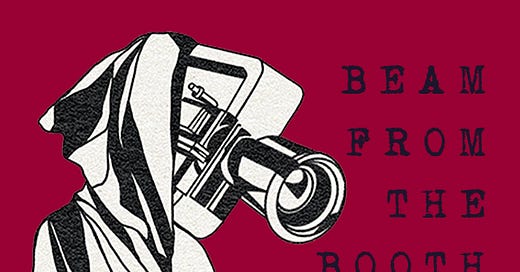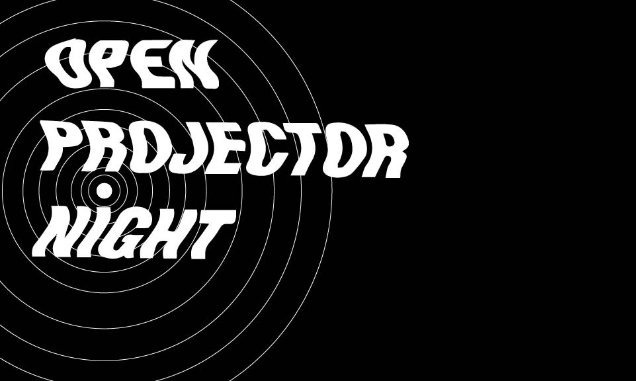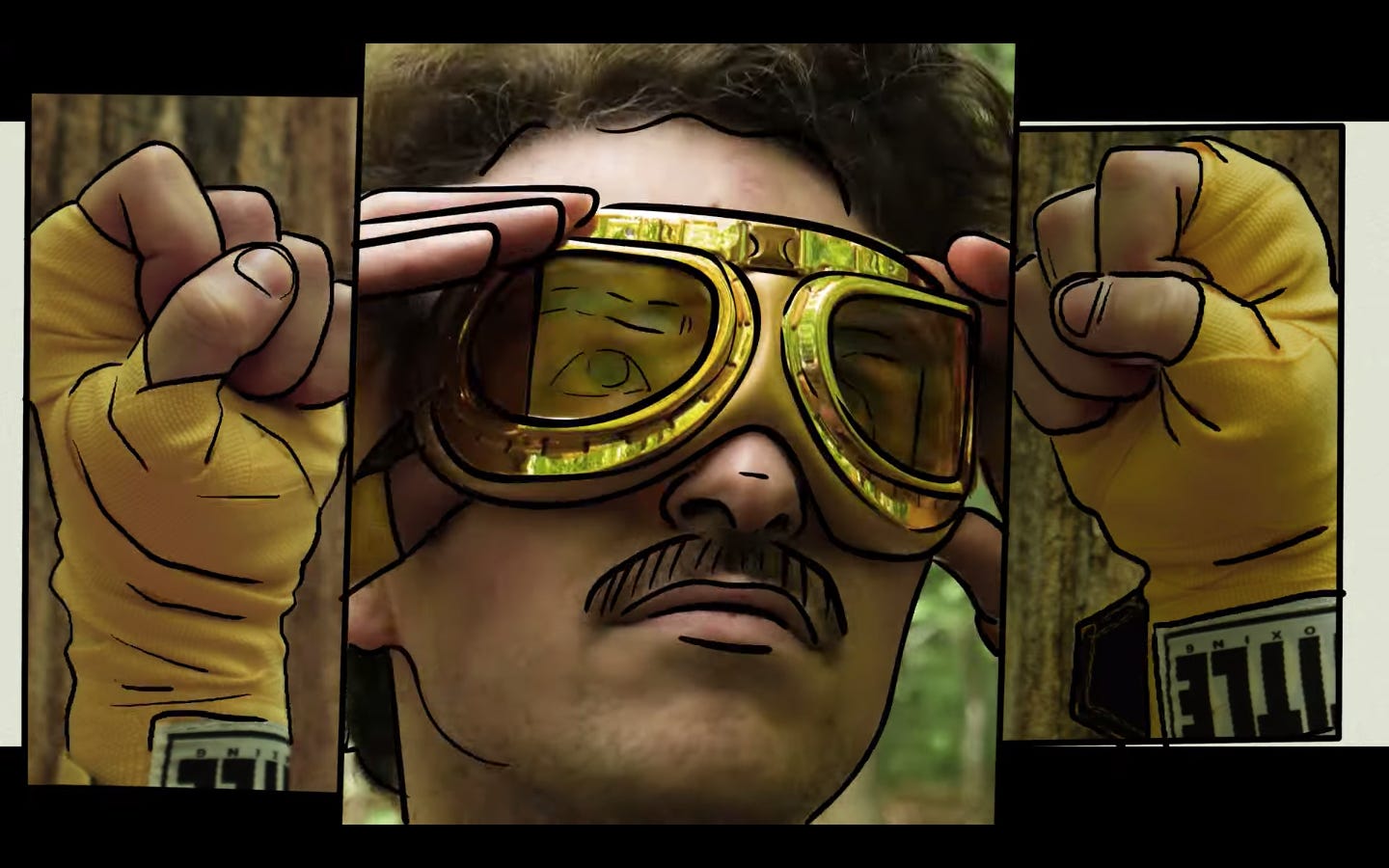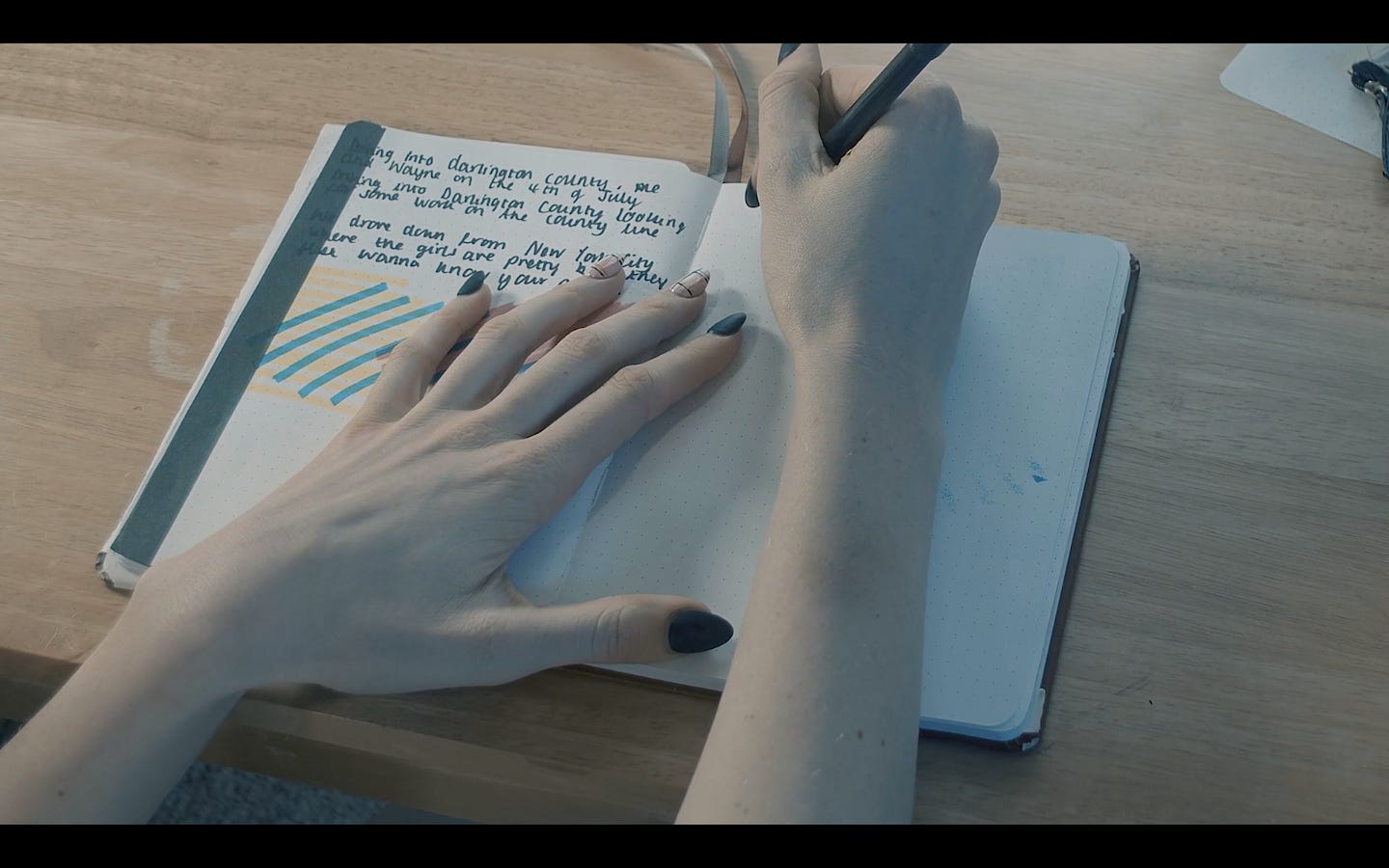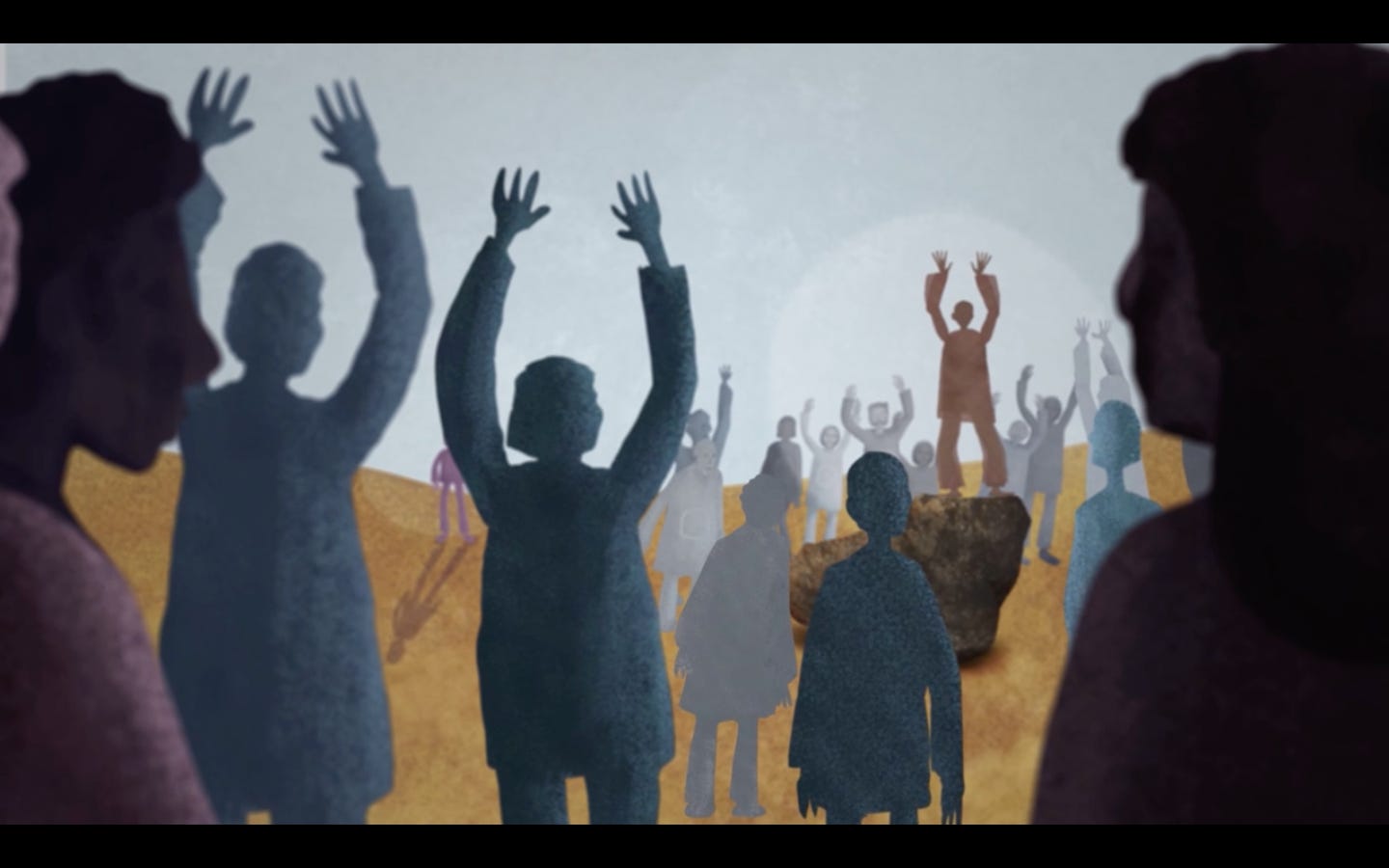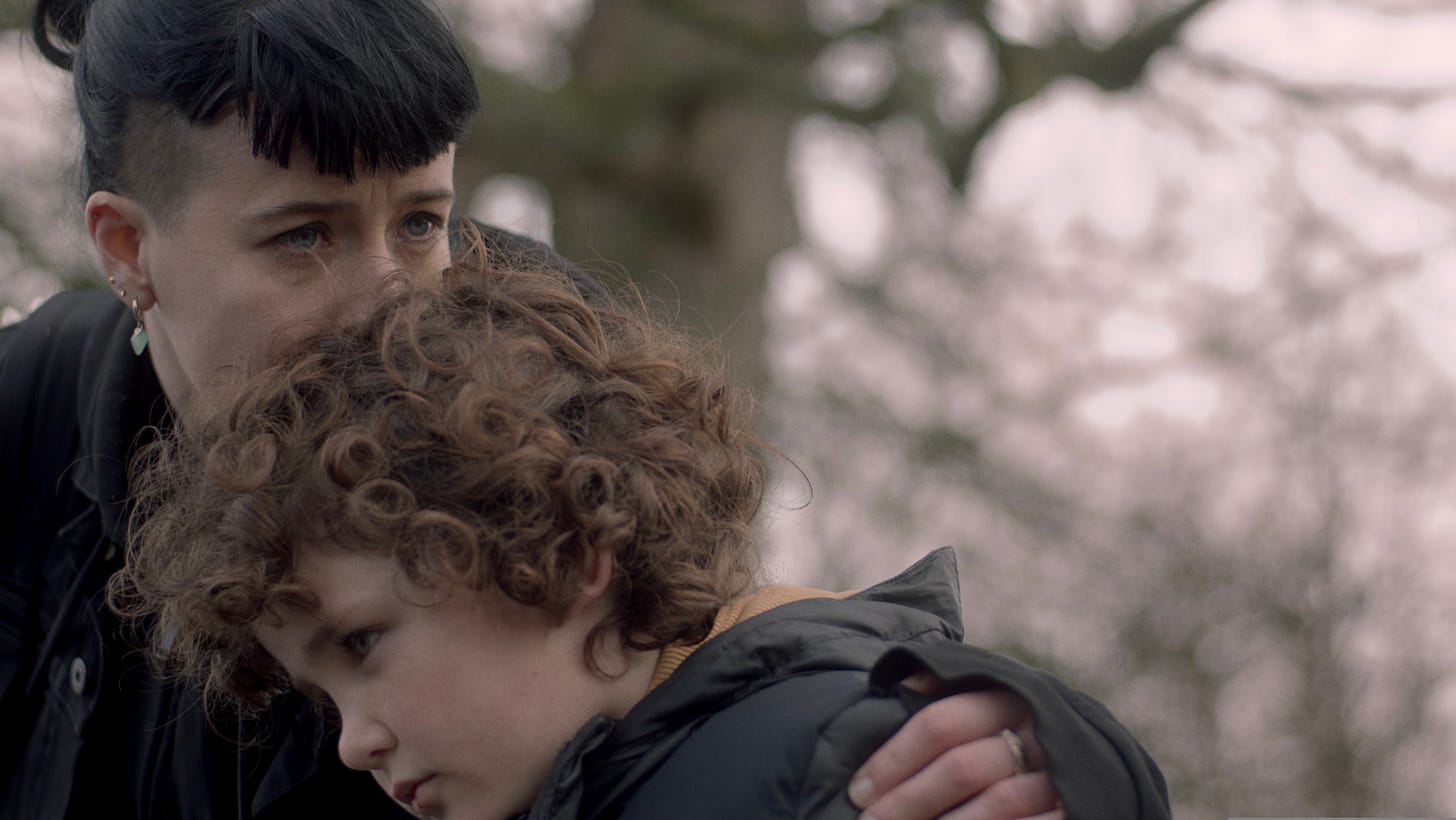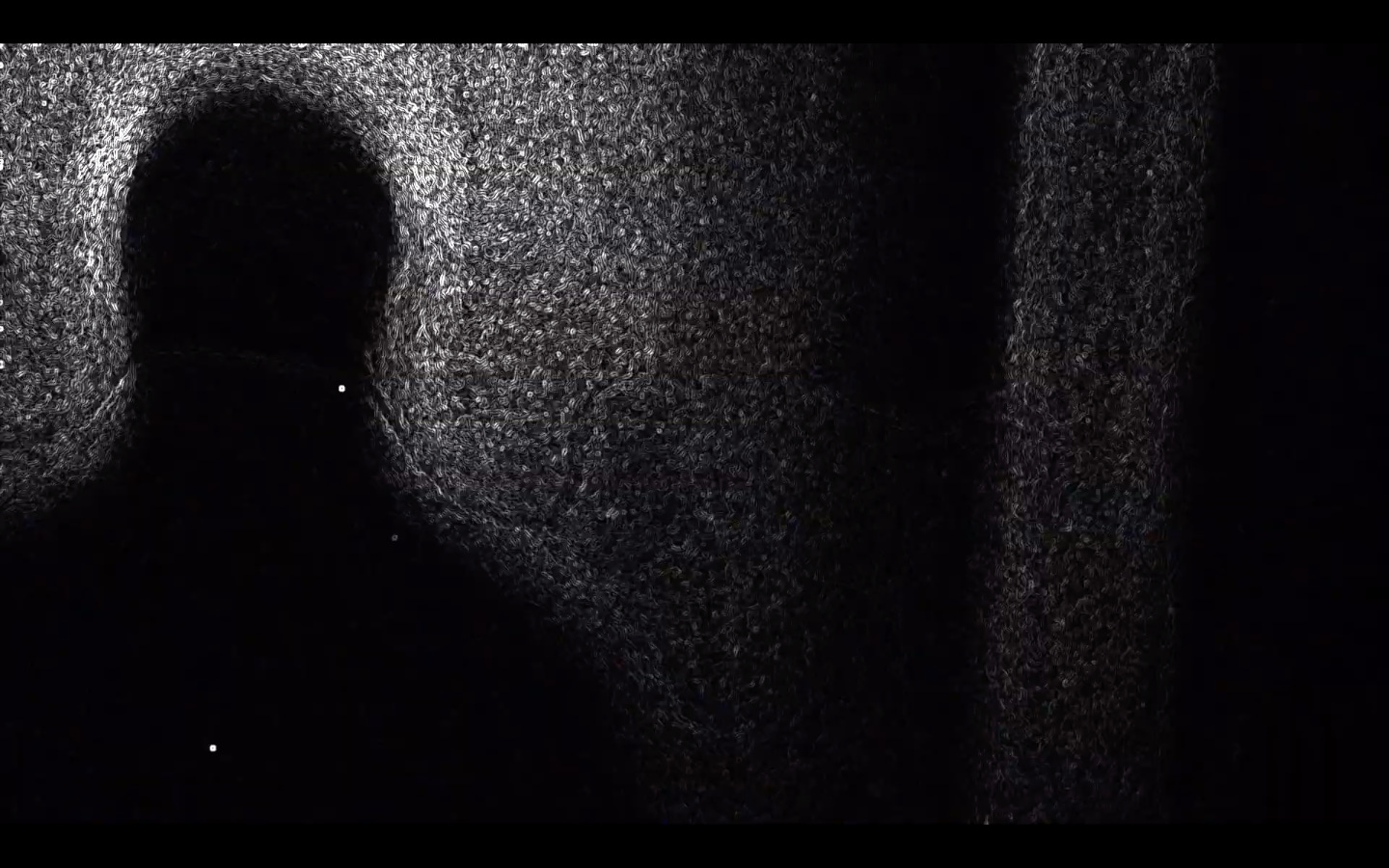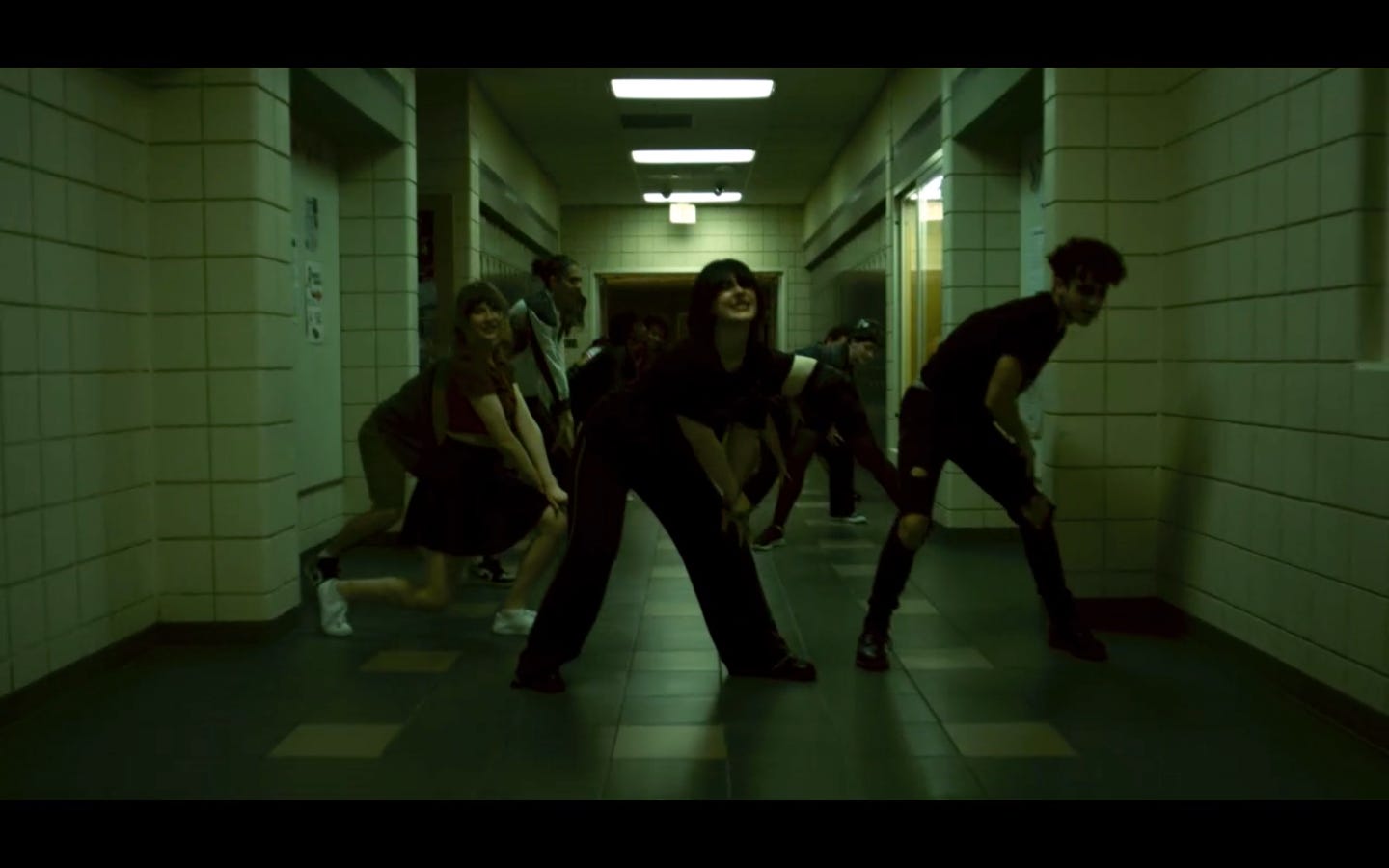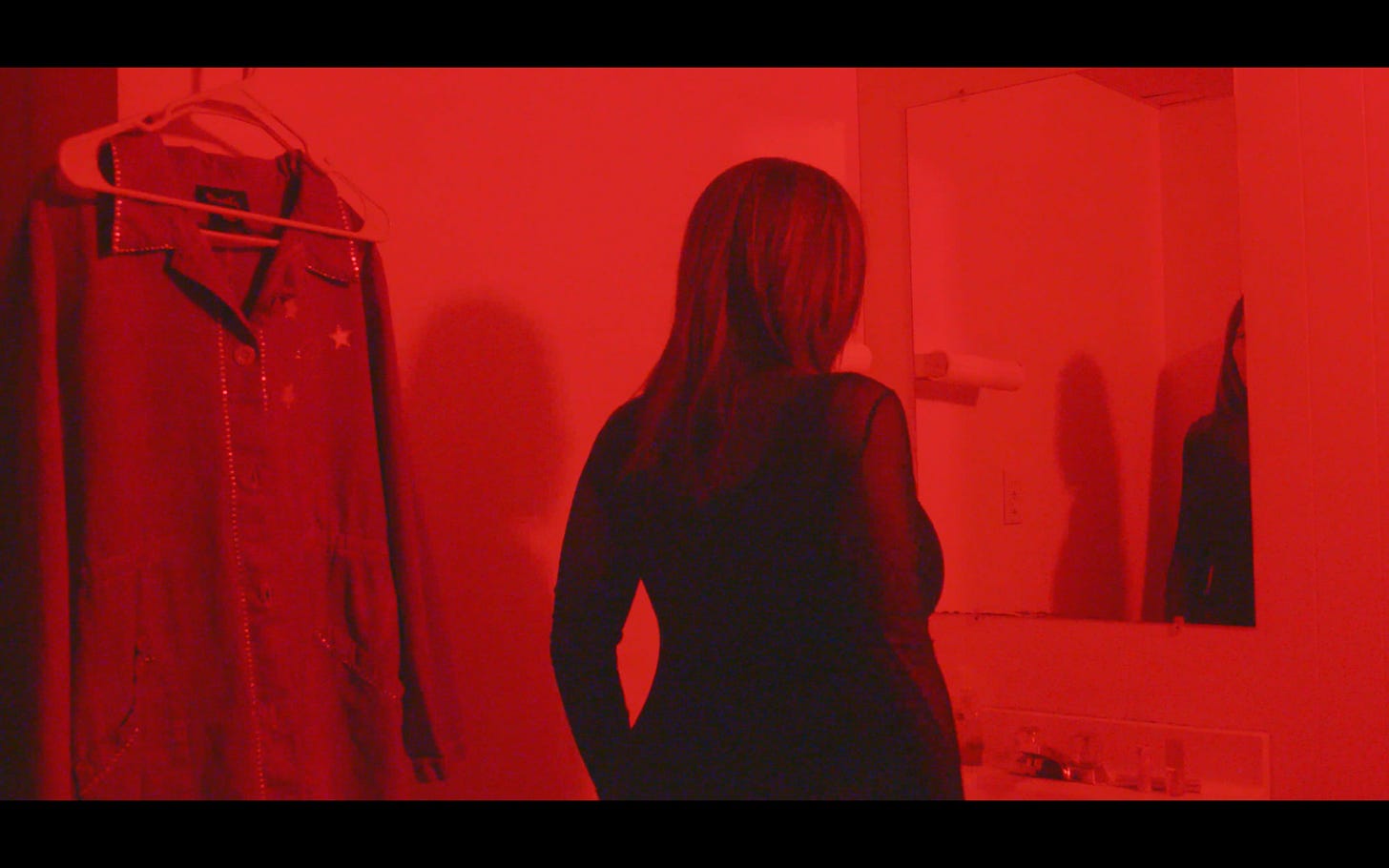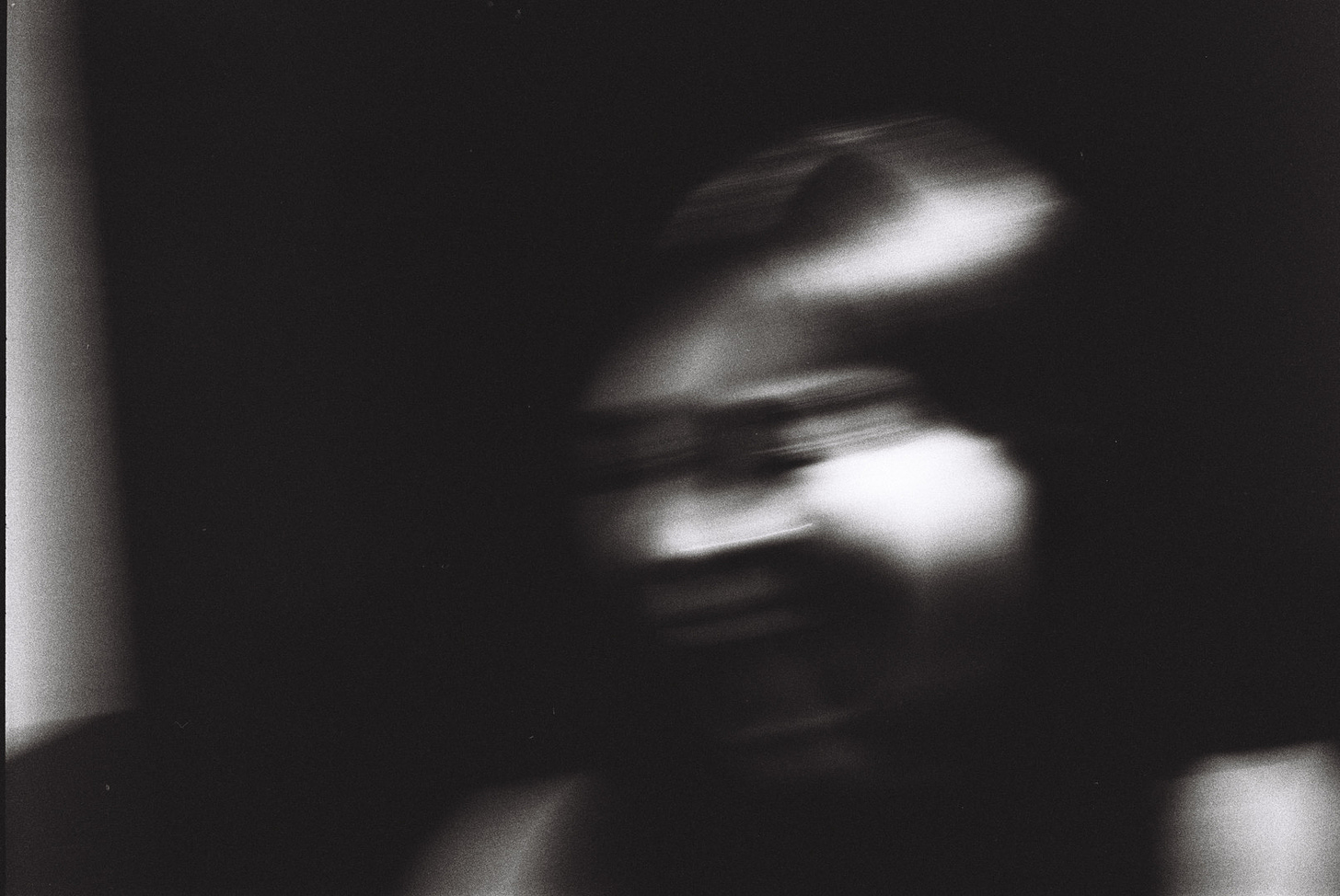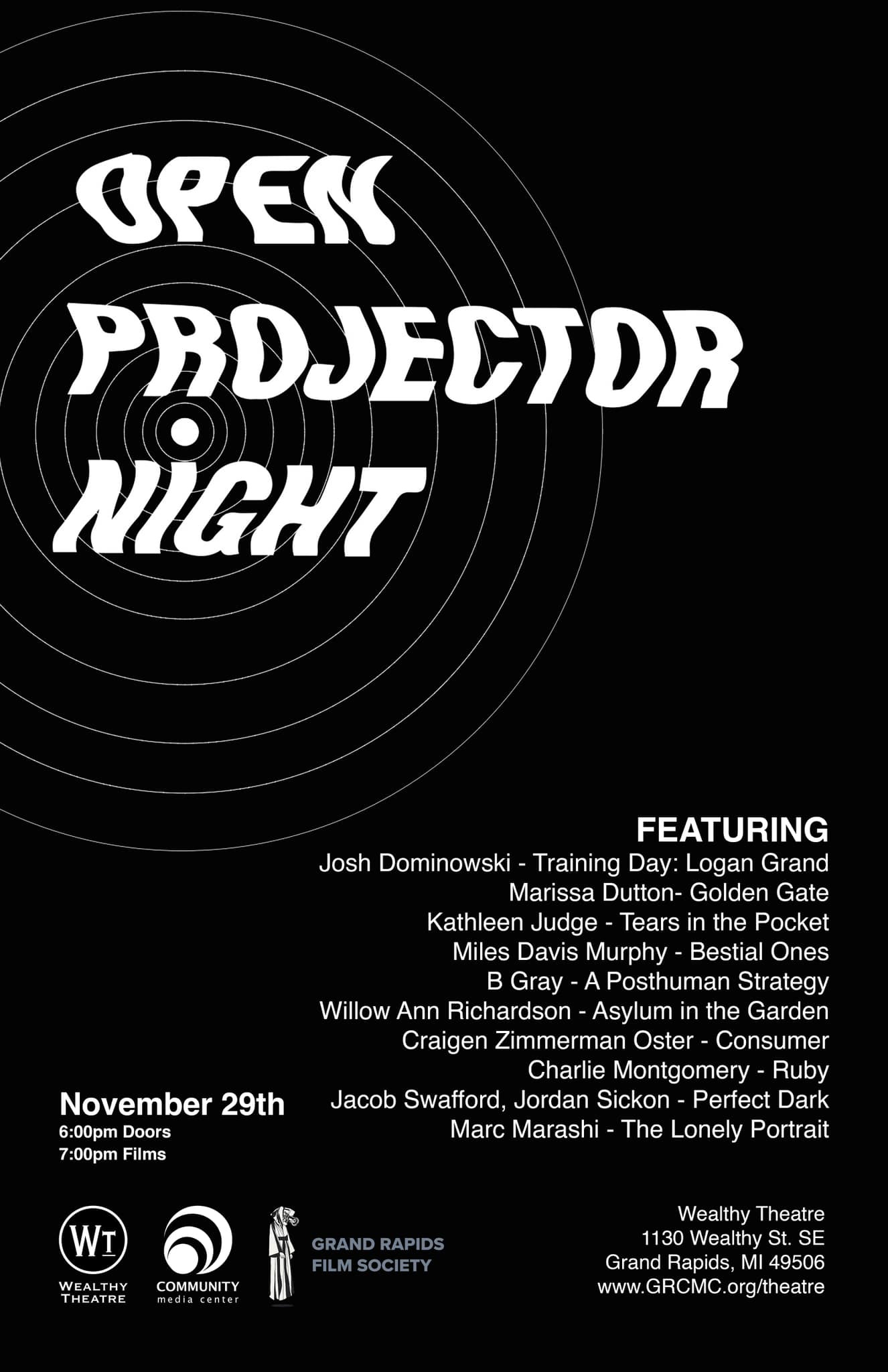[EDITED BY: GRIFFIN SHERIDAN]
Hello and welcome back to an all-new installment of BEAM FROM THE BOOTH brought to you by GRAND RAPIDS FILM SOCIETY!
We hope you all had a great holiday weekend and are rested and ready for our TWO events this week!
Up first, on WEDNESDAY (11/29), OPEN PROJECTOR NIGHT returns for another evening of short films with a Michigan connection. Plus, stay after the program for a Q&A with some of the filmmakers in attendance and vote for your favorite short of the night. Come out and support independent filmmakers with us later this week.
Then, on FRIDAY (12/1), join us for our COSTUME PARTY SCREENING of Peter Jackson’s THE LORD OF THE RINGS: THE FELLOWSHIP OF THE RING. Come dressed up as your favorite LOTR character for this screening of the original theatrical cut of the first film in Jackson’s epic trilogy.
Haven’t seen this staple of blockbuster filmmaking? Check out the now-iconic trailer for the film:
Even if fantasy is not your usual preference, we still encourage you to come out to the screening to witness the acclaimed craft that the film has to offer. Fellowship was nominated for 13 Academy Awards in 2002, and took home the Oscars for Best Cinematography, Best Visual Effects, Best Makeup, and Best Original Score.
As always, find your link to purchase tickets for both events further down in our ‘Upcoming Events’ section.
This week, we are very excited to share this special preview for OPEN PROJECTOR NIGHT...
OPEN PROJECTOR NIGHT: NOVEMBER ‘23 PREVIEW
[BY: SPENCER EVERHART]
OPEN PROJECTOR NIGHT is a series we continue to be absolutely thrilled to present, and — after our recent first-ever “Halloween Edition” of OPN last month — we’re back at it again with our regularly scheduled programming! We highly encourage you all to join us on the evening of the 29th to support and celebrate local independent filmmaking.
Our very own Spencer Everhart (who also helps in selecting works for the event and will be hosting this particular outing) interviewed each filmmaker about their short film as a preview for you all of this edition’s lineup. Check it out...
Training Day (Josh Dominowski)
A demon hunter practices his skills in the woods; specifically, the lightning that comes out of his fingertips.
Spencer Everhart: What was the primary inspiration behind your film? How did the project come about?
Josh Dominowski: I think a lot of big-budget live action media — especially sci-fi and fantasy — has been sorta stagnating creatively for a while, particularly with special/visual effects, due to an obsession with “realism.” The movies are about assembling a team of costumed weirdos with an endgame of having you marvel at what? A bunch of aliens taking over the world? I love campy plots, but I want people to embrace the camp. Meanwhile, animated films like Promare, Mindgame, Spider-Verse (even the latest Puss in Boots movie) have been doing all kinds of wicked cool and hypnotizing stuff that not only embraces the camp but is far more memorable because of it. It's like Pop Rocks over a nice steak dinner — style and substance. My goal with this short and future endeavors is to take what's so fun and creative about animated films and meld it with live action, like it's all part of one cohesive and styyyylish world.
There's an exciting interplay of live-action footage and animated details throughout the film that serve to heighten the action and create a fun cartoon spectacle; what was your decision-making process for selecting which elements would be animated and how they would be animated?
I knew I wanted to do rotoscoped lightning from the get-go, but this short was one big experiment to figure out how any of it works without just being ‘draw over the frame.’ Pretty much all of it was trial and error — watching other animations/rotoscoped materials, trying to figure out how to squash and stretch a real human being, time posterizing, impact frames (when the screen goes black and white for emphasis), etc. Certain moments were clearly planned to be ‘big lightning moment here,’ but much of the rest was taking what was storyboarded and getting the gist until it worked. If anyone reading this seeks to do a similar type of thing MAKE AN ANIMATIC FIRST I BEG YOU IT WILL SAVE YOUR LIFE.
You cleverly manipulate the space of the film through layering and panel-ing effects clearly drawn from the structure of comic book pages — how did you navigate the relationship between your cinematographic choices during production and those special effect choices during the edit?
The panels were planned in storyboarding and we shot accordingly, but for every panel that works there was another that just didn't quite seem right, and what's cool in a storyboard doesn't always translate when it's real life in action — same goes for the rotoscoped animations. Much of the editing process became how to take the ideas of the comic book aesthetic and twist it to maintain the kinetic energy, and from there I just kept trying to get more and more Looney Tunes with it. Why not, ya know?
What about this film are you most proud of?
I'm really proud it exists at all. There were a lot of frustrating days and nights hunched over a tablet, piecing it together, getting cramped hands and carpal tunnel. But I really like how it turned out overall, and it's been a valuable stepping stone for future projects. Next time the rotoscoping will be pushed even further, and we'll use more practical effects and lighting to drive the illusion home. I'm also very thankful for the people who helped out on it - the short only exists thanks to the crew on set (especially since we had to shoot this thing TWICE), and they barely even made fun of me while I was pretending to shoot lightning out of my fingers like an eight-year-old.
Golden Gate (Marissa Dutton)
A college-aged girl reflects on her failed situationship and what she wished she would’ve said in their final argument.
Spencer Everhart: What was the primary inspiration behind your film? How did the project come about?
Marissa Dutton: Golden Gate is very much based on my experiences in the college dating world and frustration with the nature of “situationships.” I wrote this film during a reflective point in my life: I had just gotten together with my boyfriend, but it had taken us months to get to that point. I fell for him long before we got together, and this caused a strange mixture of feelings when our relationship finally came about. Generally, I am a person that always falls harder and always ends up getting hurt than the person I’m involved with. As a way to self-therapize, I wrote Golden Gate. Then, I submitted the script to a University of Michigan club called M-Agination Films, and it was selected to be produced during the winter semester. Though I didn’t necessarily have to, I chose to direct the film as well because of how personal its origins.
You've built the story around a theme of memory and remembrance with devices like the flashback, the voice-over, and the journal — what was your process for developing the structure of the plot and expressing it this way?
Because this film was so heavily inspired by personal experience, I felt it necessary to bring in a reflective aspect to frame the story. There was never a point in time where Marnie’s story would have been told in the present tense. Journaling was essential to the story because this script was like my own journal in a way. Though my experiences were not exactly the same as Marnie’s, there is a piece of myself within her character, and the story would not have hit the same if not with this reflective framing.
The stairwell scene is central to the narrative's drama and a turning point for the main characters; how did you come to select that particular location and then how did you plan your cinematographic choices within such an enclosed space?
In the original draft of my script, Marnie was going to confess her love to Eli while sitting on a bench next to a river — something about a beautiful setting while receiving devastating news was compelling to me. However, we were shooting in winter, and I think myself and my crew would have gotten hypothermia in an entirely outdoor shoot so that location was quickly removed from the script. However, I did have a personal experience where I told someone I was in love with them and they didn’t say it back, but my story took place in a car, not a staircase. When thinking about the memory of this time in my life, there was something so melancholy to me about being stationary in an environment that is often associated with movement. Following this thread, I thought about stairwells and their inherent movement; the feeling of being trapped despite knowing there are places to go. In my experience, significant moments tend to occur in places where pauses are rare. For me, it was a parked car, but for Marnie, it was a staircase.
What about this film are you most proud of?
I’d say I’m most proud of Marnie’s monologue at the climax of the film. I have always struggled with writing dialogue (I’m more of an action lines person), and it was important to me that what she said felt genuine to her, and my, experience. Marnie’s monologue was my chance to get out all the frustration that I’ll never be able to say and, coupled with Hannah Gansert’s beautiful performance, there was a sense of release and freedom from those negative feelings once my words were put to screen.
“Tears in the Pocket” (Kathleen Judge)
An animated music video following the human phenomenon of injury as a catalyst for change.
Spencer Everhart: What was the primary inspiration behind your film? How did the project come about?
Kathleen Judge: The lyrics and a brief description of what the songwriter was thinking about when writing the song served as the primary inspiration for the video. The project came about after the musician approached me about making a music video for one of their new tracks.
You implement such a wide variety of techniques, textures, colors, tones, etc. throughout the film; how did you develop these visual strategies for the different sections and do they have any connection to the song itself?
As a multi-media artist, I make art using a variety of media, including printmaking, painting, animation, and video projection. I wanted to play freely with various animation methods in regards to style for this video. My aim was to create imprecise, textured, and chaotic marks and animation; I purposefully avoided using consistent lines, proportions, or characters.
The video begins with a muted, desaturated, straightforward scene from a cult event. Everything is orderly and clearly defined. I purposefully began to break down the rigidity when the character decides to flee, making the animations more expressive, fluid, and painterly. Things grow increasingly complex, colorful, and “alive” as the protagonist makes a connection with his past and community.
The synopsis notes how this music video explores "the human phenomenon of injury as a catalyst for change" — how did that concept impact your approach and design for the film?
The lyrics and this concept had a direct impact on the film's design and animation process. The snake bite scene was the turning point, stylistically. This concept additionally had me imagine him escaping his present situation and into the future—or, in a sense, the past. Imagining the character mentally travels back in time to find refuge today.
What about this film are you most proud of?
In regards to artwork, I don’t think in terms of ‘pride.’ There are moments that capture things as I’d hoped and will take into future projects.
In instances where I gave the character a more free-form artistic interpretation, it is still obvious that this is the same person because of the gesture. For instance, when I switch to a close-up of the character's feet while they are sprinting up a hill to the cabin, the far shot is distinct and steady, but the loosely drawn feet are still recognizable as the feet of a man running in the distance, even though they are drawn frame-by-frame. Other scenes in the video maintain a character's fluid gesture amid abstractions or the irregularities of drawings. I plan to explore this idea of prioritizing gesture over conventional linework and stylistic continuity in future animations.
Bestial Ones (Miles Davis Murphy)
A young, discontented single mother must choose between her troubled son or the freedom she desperately craves after a chance encounter presents an opportunity for escape.
Spencer Everhart: What was the primary inspiration behind your film? How did the project come about?
Miles Davis Murphy: Bestial Ones is my graduate film from the National Film School of Ireland. Over the four years of the course we made various shorts that could be in any genre but had to adhere to certain briefs, whereas for our final projects we were free to make whatever we chose, and Bestial Ones was a result of that. While it is entirely a work of fiction, the film is still quite personal in many ways, and is a combination of different aspects of my life that I have wanted to explore for some time. I also grew up in the DIY punk scene, and setting a story within that world, particularly a drama, has always appealed to me. The biggest source of inspiration for this film was having a child myself when I was sixteen and making the difficult decision to give him up for adoption. It was the best choice for everyone involved, but to this day I still wonder what life would look like if we’d raised him. Bestial Ones is an ode to my own mother, who sacrificed a lot in her life while raising a troubled son as a single parent. It’s an exploration of my fears of parenting and lingering guilt at giving away a child in my youth — a form of abandonment in its own right. But above all else, it is a story about love, family, and learning to make the difficult decision to grow.
The entire cast brings a real presence, both intimate and immediate, to their roles — what was your process for working with the actors to get the performances you were looking for?
I truly believe that one of the most important aspects of a director’s job is casting — if you can find actors that connect with the script and not only bring something personal to the role but elevate the characters to something better than what you created then half of your work is done for you. I was fortunate enough to find that with the cast of this film. Working with actors has always been one of my favorite parts of the process, it’s through the conversations about character and dissection of the script that the story moves beyond words on a page and becomes something “real.” That’s how we approached our preparation for this film. We did very little rehearsal in preproduction because I wanted to maintain a sense of spontaneity on the shoot and so, instead, we just talked. Myself and the actors would either sit down or have Zoom calls and for hours just discuss the world, the characters, their relationships, backstories — things that would never be in the film but would provide context and justifications for who these people are and why they make their choices. I made playlists of songs I felt captured the tone of specific scenes, or songs I thought a certain character would listen to, and I shared them with the cast and they would add their own. During the weeks of prep we became so close that we were almost like a family, which was integral in creating the honest, authentic performances I believe each actor was able to convey.
The camerawork and editing evokes a looseness and naturalism we might associate with documentary filmmaking; how did you develop the visual style of this film and how did the shoot itself impact those strategies?
The poetic realist tradition is one of my favorite models of filmmaking. I believe it’s one of the most effective at creating an immediate connection between a film’s characters and the audience because it does employ a lot of techniques often seen in documentary and cinema verité, which subconsciously makes people believe they are watching something “real.” We chose to employ techniques associated with realism, but we didn’t want to limit ourselves within the tradition so ultimately every decision around the film’s visual style was down to what would deepen the audience’s emotional connection with our characters. At its heart this is a story about family, and I wanted viewers to feel present in each scene, almost as if they were a part of the family themselves rather than mere observers. What I wanted was to create an intimacy, so when breaking down the script into a shot list and storyboarding, that was always at the forefront when deciding how we would cover a scene. I always planned to shoot the film handheld because I feel it can add a sense of rhythm, and it also allows you to cover multiple angles in a single shot which was extremely helpful on the shoot. We shot the film over the course of a week, which for a short film sounds like a lot of time but when you factor in the amount of locations, unit moves, the constraints of working with child actors, and scenes featuring a lot of extras, it was a really tight shoot. This was the fourth time that the director of photography and I had worked together, and our familiarity was a huge factor in how efficiently everything ran on set.
What about this film are you most proud of?
This is a difficult question to answer. I’d say if pushed I am the most proud of the performances. There have been a lot of times after screenings where people have approached me and said they really connected with the film which wouldn’t have been possible without everything the actors brought to the film. With that being said, I am proud of everyone who worked on Bestial Ones — every single person put so much of themselves into this film, and I really believe that comes across on screen.
A Posthuman Strategy (B Gray)
Part of a series of experimental shorts that attempt communication without spoken or written language. The motivation is to explore methods of exchanging impressions through tone, texture, and motion.
Spencer Everhart: What was the primary inspiration behind your film? How did the project come about?
B Gray: It’s inspired by the idea that language and film/video operate similarly because they are flattened reductions of what they represent. Both do their best to operate with brevity because, in the case of both, we (humans) tend to be fickle and impatient.
Form seems to be the subject of hyper-fixation or abandonment. I’m very interested in learning modes of expression that bypass these tendencies through immersion and a lack of recognizable form. The straightforward and honest nature of abstract expressionism is beneficial for this.
This work is so rich with a range of tones, textures, movement, and layers (both visually and aurally); how did you develop the aesthetic for this film, and what tools or processes did you use to achieve such ambiguous sounds and images?
I began with the sound here, as I knew it would play a vital role in the effect I sought. I had been doing a lot of direct-line recording because I was swamped then, and I didn’t have the time to wire and position speakers and amplifiers, so I was clamoring to vibrate some air and catch it with microphones. Eventually, I carved out the time, and the soundtrack formed quickly, which is when the ideas for visual elements started to take shape in my mind.
A Posthuman Strategy uses Super 8mm film footage shot with collaborators, which felt appropriate, as the footage is an analog montage projected onto a screen and captured digitally. Both audio and video had now been sent through a controlled space before being re-flattened for further experimentation. The footage had a richness and depth that could not be reproduced digitally, so I quickly recognized that it would be a potent material for immersion. The textures and depth in the visuals were the final components and were the most meticulous and tedious steps to make this.
Your artist’s statement notes how this movie is part of a “series of experimental shorts that attempt communication without spoken or written language” — what type of communication were you interested in exploring here, and what potential do you see for that in avant-garde filmmaking in general?
As I mentioned above, the potential to explore abstract expressionism as a mode of communication is of great interest to me. Beyond its potential for a deeper dimension of communication, it is inherently more honest. By this, I mean it cannot misrepresent, as it does not attempt to represent in the first place.
The development of alternative modes of human connection is crucial at this point. While I don’t think anything being developed here will supplant language anytime soon, I think finding and developing a genuine relationship with each other is the antidote for the hyperindividualism that pervades modern American existence.
What about this film are you most proud of?
This work has evoked the most visceral and intense reactions of anything I’ve made, and while everyone who watches it seems to have a different response, it is ultimately a positive one. I’m grateful that people enjoy it, and I am incredibly proud to be part of Open Projector Night!
It means a lot to be recognized by the Grand Rapids filmmaking community alongside some very talented creators. Many thanks to you, the festival, and the Grand Rapids Film Society. Events like this are essential to the vital connections I spoke of, and the community is truly grateful for your efforts.
Asylum in the Garden (Willow Ann Richardson)
Smoking weed with friends is something of a ritual for Margo and her band of misfits, Blood Rain and Coco. However, when the group is drugged, that ritual quickly becomes a hellish nightmare.
Spencer Everhart: What was the primary inspiration behind your film? How did the project come about?
Willow Anne Richardson: For as long as I can remember, music and horror films have been such a huge part of my life. I was involved with theatre, stage plays, and musicals from a very young age, and it always felt so magical and otherworldly to me. Even musicals not on stage but on film were always so entrancing. When they're done and rehearsed right, the combination of acting and singing and dancing is so seamless and effortless looking...I can't help but be inspired. I always felt a true, giddy-like joy when watching or when I was in a musical, so while attending Motion Picture Institute (MPI) and when presented with having to make our 3rd and final “Thesis Film”...I knew creating a musical was something I needed to take on.
Horror is another great love of mine and is what inspired me to make films in the first place. I am such a huge shock-value fanatic and lover of everything creepy and strange. Films like Coraline and The Evil Dead gave me that same joy I felt in and around musicals, so combining the two was a given and a must. Horror and music are my two great passions, and I was so excited to have the opportunity to create a film that included them both.
You're credited as co-lyricist along with your composer who wrote the score and songs; what was your process for collaborating with them on a movie that utilizes music so extensively?
The process of creating and mapping out the lyrics and music for Asylum in The Garden was the most enjoyable process I've been through. I worked alongside my best friend, Ryan Buyers, who is one of the most skilled and talented people I know. We started working on music very early on, even before the final script was finished. The film was shot at the end of July, but Ryan and I had been working on music since January of 2023. I knew the concept that I wanted for the songs so we would just sit down and trial-and-error different lyrics until we eventually had two songs that worked and stuck. One of the songs had to be a “boppy” catchy number and the other I wanted to completely contrast that. It would be much more melodic and enchanting, just to show how the story did a complete 180 and became a nightmare.
Having the lyrics of the two songs completed so early on was also extremely helpful for making the songs flow naturally with the rest of the script. We wrote all of the lyrics first and then created a melody that flowed with what I wanted to be said. When it comes to composition, Ryan and I put together an orchestra of all extremely-talented volunteers and recorded the instrumentals for “Lucifer's Song” and most of the background music. It was extremely surreal and inspiring to see an entire orchestra play something created for one of my films, and I learned quite a lot from the process.
How did you go about developing the two musical sequences in terms of shot selection, camera movement, etc. while also incorporating dance choreography?
Deciding what I wanted the first song, “The Devil’s Lettuce,” to look like was the simpler of the two...because I knew from day one that I wanted a fun, extravagant dance sequence. That's where the choreographer for Asylum, Jacob Crocket, comes in. Once the song was finished and composed, Jacob was brought into the picture. We would meet up, and I would play the song for him, explaining the scene and having him read the beginning of the script. Much like the lyrics of the songs, this was another very fun, enjoyable trial-and-error process. He would show me different moves and ideas, and I would share my thoughts and eventually a dance was formed.
In addition to knowing I wanted a big dance number, I also knew I wanted it as a Oner or one continuous shot. The week leading up to the shoot, we had three four-hour rehearsals where Jacob taught the cast the dance, and I had my cinematographer, Carter Stover, sit in and watch the dance play out. He knew I wanted a oner and, with that, we mapped out the camera movements and practiced with Carter during our rehearsals; that way, by our shoot date, it was smooth and simple. Planning out how “The Devil’s Lettuce” was going to look was such a thrilling experience, and I couldn't be prouder of how it turned out.
“Lucifer's Song” was the slightly more intricate one of the two. Jacob also took the reigns with what I like to call the ‘choreographed movements’ because it wasn't a dance-heavy song, but it was crucial to have certain blocking and movements, and Jacob helped to make my vision and ideas work with the music. We would spend the last hour of our rehearsals working on the song until both actors were confident with what they had to do. On the shoot day, I referred to my shot list, and we got quite a few different angles of the song and did many takes. I wanted to make sure we had a static wide shot for coverage and to include more of the scenery, but I rarely cut to that shot in the final product. I am a huge lover and user of handheld shots, which most of this film was, and I think handheld for this song was the way to go. Many of the shots used were up-close-and-personal to the actors so the audience has no choice but to take everything in. I feel as though it makes it much more immersive and intense that way. And with the combination of handheld, it really lets the audience know that Margo's state of mind and situation is not stable. The song starts off very seductive and ends extremely intense, and I wanted to get that point across.
What about this film are you most proud of?
There are so many things I am proud of about this film. I had a wonderful process of writing and directing, and watching the final product makes me so giddy and happy. It truly looks like how I pictured it in my head, all the way back in January when this film was still just an idea. What I am truly most proud of, though, is the commitment and hard-work from both cast and crew. Everyone was a joy to work with and was a part of making this process so incredibly fun and enjoyable. The film turned out just the way I had hoped, and I couldn't be prouder.
“Consumer” (Craigen Zimmerman Oster)
A music video for the song "Consumer" by Quality Cinema Band.
Spencer Everhart: What was the primary inspiration behind your film? How did the project come about?
Craigen Z Oster: The project was conceived while John (frontman of QCB) and I were kicking around ideas for future projects at the Detroit YMCA. There’s something about being at the gym that really makes it easy to let ideas flow. When we go together, usually everyone else has headphones in. Everyone’s locked into their own thing, so it creates this weird liminal space where we can just talk about whatever in public. It’s really tight.
He has a new album on the way, so we wanted to do something unique with a music video, something that wasn’t just the standard performance-type video or short film-style. All of that can be really cool when done well, but we were both interested in deconstructing the form of the music video through the video itself. His track “Consumer” was the perfect song for that.
As the director and co-editor, I was drawing heavily from the work of Joe Swanberg with this piece. He’s sort of the GOAT American independent filmmaker of the 2000s in my opinion. I’ve always been fascinated how he’s able to blur the lines between reality, perceived reality, and performance. Everyone should check out his movies Art History and The Zone. So I wanted to do something similar with this where you’re seeing the creation of a music video in real time; the staging, the camera operating, the editing, all of it.
Your director's statement notes how "the concept for the video was conceived by John Shaughnessy (lead singer of Quality Cinema Band)" and yourself — what was that collaborative process like with him and did that creative relationship extend into the shooting phase and post-production?
John’s my best friend, so the collaboration was pretty easy. We first became friends when I reached out to him to play the lead in our feature film Drives Me Crazy. From that first conversation on, collaborating together has been a pretty fluid process where we just trust one another’s creative instincts. He came up with the initial idea of the video being the making of the video itself, and from there we just went back-and-forth on how to extend that concept even further. Once we brought in Nick (our DP) and Nikki (my fiancé/editor), we started building out different ways to achieve that initial idea.
I hope I get to keep making stuff with John. There’s no one I really respect more creatively.
You combine such a wide range of material here, from performance shots and behind-the-scenes footage to cameras, screens, sets, and various visual textures; how did you go about assembling and arranging such a structure for this film?
This was sort of a massive undertaking to pull together. From the start, I wanted to shoot multiple formats. That’s gotten really popular in music videos the past few years, but I don’t think anyone has really done it to the effect that we have where the form and function are one and the same and contributing to the greater themes of the video. Sure, it looks cool to flip from really nice RED footage to gritty/grainy miniDV tape footage, but for me there has to be a purpose for that change. What is being communicated by the different mediums?
I brought in my buddy Andrew, who directs and edits a bunch of rap videos here in Detroit, to shoot a bunch of actual behind-the-scenes on a little Sony mirrorless. One of our gaffers, Al, brought his miniDV camera as well. This goes back to that original idea of wanting to blur the lines between performance, reality, and perceived reality. Obviously a lot of the video is staged ‘behind-the-scenes,’ but when you start to mix in the tape footage from Al and Andrew’s footage throughout the day, you can build this tapestry where it's all reality and fiction at the same time.
We live in a world where we’re constantly narrativizing our own lives. That happened in the past for sure, but now we do it in a different way. It isn’t just in our own heads, or writers attempting to narrativize history on a grand scale. It’s every single American who participates in social media and online culture. We’re constantly building and re-working the narrative of who we are for everyone else. This goes back to both the core idea of the music video and its physical form in terms of shots and cuts. It is quite literally what the process of making this video was like, but it's also completely fake in the sense that it's a reconstructed narrative for others to consume.
My fiancé and editor, Nikki, was the one who really brought that out in the edit, though. When I’m directing or DP’ing, I really hate having to go in and make sense of it all right away. I know we did a good job, but as soon as I see the footage I can’t help but think of all the things I wish I’d done differently. She was able to make sense of the massive amount of footage we had from the day and really build that interplay between the different camera formats. We had a loose structure planned, but she took it and made it something much more interesting.
What about this film are you most proud of?
I’m just proud that it exists at all. It’s really hard sometimes to make stuff independently, with little-to-no money. You gotta get everyone involved to set aside their time when they have a million other things going on in their life that are more important than shooting a movie or a music video. Like sure, to me, shooting this and getting it right was insanely important because I absolutely love making movies and creating something we could all be proud of. But I can’t expect everyone to always be as fully invested in the thing as I am. That’s why, as a director, I really want everyone involved to feel like they are just as important to the success of this project as myself or anyone else involved. So when we shot, everyone had a say. The video would’ve turned out entirely different if we just always went with what John or I thought. It wouldn’t have been as good. Having people there like Brandan Keller (who is a DP I really look up to) and Al (who shoots, directs, edits as well) being there to light was awesome. They contributed so many ideas beyond just where to put a light. Same goes for everyone else involved. Nick, Victor, Anna, Psyche, Connor, Steve, and Drew all made it something greater than it would’ve been.
As far as a specific moment in the video, I’m really proud of the moment it shows the ‘offline footage’ graphic and then cuts to the video literally being edited. It’s me doing the editing, so it's really funny to be like “oh yeah, the few seconds I’m in it are the sickest”, but creatively I think peeling back the curtain on the production of the video another layer deep like that gives the viewer another opening to question what they’re seeing when they watch this video.
Ruby (Charlie Montgomery)
As Ruby finishes work at her parent’s laundromat, her friend Jamie stops by to help her get ready for her drag performance. Ruby confides in Jamie about her nervousness and conflict with her unsupportive mother. While Ruby steps out of the room to change, her Mother comes in.
Spencer Everhart: What was the primary inspiration behind your film? How did the project come about?
Charlie Montgomery: Many of the closest relationships I have today are with folks who are transgender. One of which I consider family, I mean we grew up together. As we both got older, we both also grew to have places within the LGBTQ+ community. Having this relationship allowed me to further see into how queer and trans relationships with family members can falter as we “come out.” As these relationships with family members, parents particularly, boil into conflict it is crucial for members of the LGBTQ+ community to lean on each other. This was my main inspiration for Ruby and how the film came about into production. I wanted to tell a story of friends leaning on each other as they navigate their gender identities as well as support one another in a conflict.
You've crafted a very striking style in the movie with bold colors and an observational roving camera with extended takes; what drove your creative decisions for such a deliberate visual approach to this story?
When thinking about the style and visual approach of Ruby, my main concern was being able to be present with the characters. I didn't want any cuts or edits to take away from their moment with each other. Friendship is built, for me, on these long conversations with friends where we spill our guts. This is their time to heal and process what is going on in their lives and it is up to the audience, or the camera, to observe. The bold colors were a result of what the character's were feeling. What they are talking about invokes strong, overwhelming emotions. When you're angry and/or sad, it almost feels like your world has a blue or red filter on it.
There's an affecting naturalism to the actors' performances in terms of dialogue, body language, and behavior — how did you work with your cast in order to achieve this and develop their characters?
It was a priority for me to cast folks who are a member of the LGBTQ+ community. It would not feel genuine to go in the other direction. With that, casting proved to be difficult. I ended up casting from local queer Facebook pages and finding our lovely leads, one of which had never acted before. When I sat down with them before filming I told them to stick to the script the best they can but to just have a conversation. If they didn't hit lines word-for-word, it didn't matter. We had time. Just talk. I think this allowed for them to feel comfortable enough to just breathe and let the dialogue flow naturally.
What about this film are you most proud of?
I am proud that we were able to execute something difficult, extended takes, without compromising on the story. I think both the cast and crew were able to grow as individuals from this experience. When a story is important to tell you want to go the extra mile to make that show visually. I think we accomplished that.
Perfect Dark (Jacob Swafford & Jordan Sickon)
A woman’s last moments before she is consumed by a darkness.
Spencer Everhart: What was the primary inspiration behind your film? How did the project come about?
Jacob Swafford: Perfect Dark is something much different than my past narrative films. This film still has a narrative, but it is much more about the process. All I had was my old still photography cameras and a bunch of rolls of black and white Kodak film. So, I had the idea to make a sort of stop-motion project consisting of all still photographs. My main inspiration was lightness and darkness. The way shadows move around. I think black-and-white film is the perfect medium for exploring darkness.
Your visual approach creates a kind of ambiguity in terms of sources (still photographs? frames from film footage?) and editing (animation? optical effects?); what was your process for assembling and manipulating these images?
All of the visual effects you see were done in-camera (except the still in the beginning). For some of the photography, I focused on capturing motion blur by using long exposure photography to blur and shape images. I developed the film myself, so I used scratching in some places to add texture to the film negatives. But the film is entirely unedited still photographs I took of Jordan.
You achieve a level of unease, anxiety, and even dread through the layered textures of the fluttering soundscape — how did you craft the audio and how did you conceive of the relationship between the sights and sounds?
Sound is very important to me when making a film! I have to give a big shout out to my composer, Chris Meier, who I have known all my life. He really understands me and my tastes. I think we are very similar in many ways. He knows exactly the sort of dark, unrelenting atmospheres I like to create. A lot of his artistic expression really shines here.
What about this film are you most proud of?
I am most proud of its look, the movement we achieved with the photography, and Jordan’s performance.
The Lonely Portrait (Marc Marashi)
An AirBnB guest stumbles upon a hidden piece of art that, once hung up, has an unexpected and unsettling effect on the home.
Spencer Everhart: What was the primary inspiration behind your film? How did the project come about?
Marc Marashi: My friend, Andrew, and I had been tossing around movie ideas for a while. I went to film school years ago, but hadn't shot anything since. Andrew is an actor who's done plays, small parts on TV shows, and motion capture performance for the Call of Duty and Mortal Kombat games. One day, we figured ‘screw it, why don't we just get together and shoot a short in a night?’
I had sort of a nugget of an idea about a guest at a rental property finding an odd painting tucked away that started doing unusual things once it was hung on the wall. I think that's something I sort of absorbed from old Stephen King short stories. It's a trope he's used a few times, but there's one in particular — “The Road Virus Heads North” — that is more fully dedicated to that idea and that was definitely an early influence on our short. We didn't really have much beyond the setup when we got together to shoot, but over the course of the night we worked through the story beats and made an 8-minute short on an iPhone.
It was, uh...not good. But we had a sense that the backbone of it would probably work. So we bought a camera and some equipment and decided to take another crack at it. Once the equipment showed up, it basically came right out of the box, and we started shooting again. This time, we shot it all over the course of two days, and we were both pretty happy with how it ended up. Then, about six months after completing that edit, I revisited it and realized that it in fact actually still sucked. So Andrew and I sat down and tried to pinpoint what didn't work and thought through all the things that felt sort of unfulfilled within the premise that we'd like to include, and then we reshot the lions share of it yet again. And that's how we ended up with this current version.
The structure of the film is so effective for how it carefully builds each new event into an ongoing process of realization that slowly becomes more frightening; what was your approach to editing this narrative and was it guided by your use of one character, one location, and virtually no dialogue?
Thanks. We had figured out the basic trajectory of the story on that first attempt we made. And then it was fine-tuned as we continued to reshoot it. That all developed pretty naturally as the movie came together.
As far as the editing goes, I didn't really have a philosophy for it on a macro level, but horror, like comedy, does have a natural rhythm. Even in the most frantic scenes you still need moments for the camera to slow down and quietly hold an image for a while so that you can build tension before the scare. The disparity between those long, controlled shots and the frantic, quick ones is the only thing that makes them both work. As the movie came together in the edit, there were a couple scenes where we really needed to pump the brakes for a minute, but we didn't have the footage necessary to do so, which was one of the main things we addressed during our reshoots. It's not something that's controlled exclusively in editing. The camerawork really needs to be in lockstep with that as well. Those slow, tense shots typically require much more forethought and precise execution than the frantic stuff. They often rely on more of a dynamic relationship between the foreground and background.
The single-character, single-setting premise was a product of our very limited resources, and it definitely affected the edit. For the first half of the movie, we're sort of just watching a guy look around the place and make himself at home, read a book, order pizza, etc...it moves at a very languid pace. Both Andrew and I are always antsy whenever we screen the movie because it feels like it takes a while to get to the exciting stuff, and we're worried we're losing the audience. But I think so much of what's fun about a horror movie is that period of time between when you realize something is off and when the shit finally hits the fan. The frantic, run-for-your-life stuff is fun, sure, but you want to go on a little journey to get there. With that in mind, we thought it was important to let that first half feel natural and unhurried while also making sure we built enough curiosity around the painting that when the audience doesn't see it for a while, it's still on their mind and creating some sense of forward momentum for the story.
Obviously the painting itself is a central plot device and visual element throughout the movie — how did you develop the aesthetic of the transforming portrait and how did you determine the particular details of each altered version?
The night before our first shoot, when it was still just a kernel of an idea, I did a quick “painting” on my iPad of a grinning old crone standing behind a table with a plate of some mysterious meat. When I showed it to Andrew, he very correctly assessed that nobody would ever find that painting in a closet and go hang it on a wall. We decided it would make more sense for that to come later and for the initial version of the painting to be something more innocuous that slowly became menacing. I thought that an image of a woman very deliberately looking away would be unusual for a painting, and, while not particularly unsettling, at least sort of off looking. But that initial painting I did of the old crone at the table ended up being the image we used for the reveal — when the woman finally turns to face him.
We decided that first night that it was going to be impractical for me to do ten or twelve or however many full-size paintings, so those were all done digitally and then we took a bit of a gamble that I could effectively motion-track them into our footage with After Effects, a program that I had never used prior to this. Shockingly, it was not that hard to pull off; add some depth to the sides and a shadow on the wall, and it looks surprisingly convincing.
From there it was just a matter of making variations of that original image. The initial idea was that the woman would be progressively more rotten and alien-looking as the story goes on. But it's surprisingly difficult to paint faces that are actually frightening looking, so I ended up scrapping probably half of the variations I did, and I just used what seemed like the scariest ones at the end of the movie. As far as the other components of the paintings, those were essentially just like photoshop layers that I would cut and paste into different versions, adjust as need be, etc. So it allowed a ton of flexibility. If, say, we decided we wanted to use a different version of the woman after the front door disappears, I just paste the door layer into the other painting, resize things, and we're good to go.
What about this film are you most proud of?
This is more about the process rather than the finished product, but I would say I'm proud that we just kept at it until we figured it out. There's certainly a world where we just finished that crappy first attempt at the movie, got discouraged, and moved onto something else or gave up entirely. Seeing how much it improved with each attempt was really fulfilling, and I'm really proud of what it eventually turned into.
UPCOMING EVENTS
WHAT: A program of curated short films from independent filmmakers with a MI connection!
WHEN: Wednesday, November 29th, 7:00 pm.
WHERE: The Wealthy Theatre
LORD OF THE RINGS: FELLOWSHIP OF THE RING (Jackson, 2001) + COSTUME PARTY
WHAT: Come dressed up as your favorite Lord of the Rings character and join us for a screening of the first installment in Peter Jackson’s epic trilogy!
WHEN: Saturday, December 1st, 7:00pm
WHERE: The Wealthy Theatre
And so we’ve arrived at the end of another BEAM FROM THE BOOTH! We appreciate you taking the time to read it and truly hope you’ll continue to do so. Be sure to SUBSCRIBE to get each issue in your inbox every SUNDAY, and stay up-to-date on all things GRFS.
Plus, join us on social media! We’d love to chat with everyone and hear YOUR OWN thoughts on everything above (you can also hop in the comments section below).
Know someone you think will dig BEAM FROM THE BOOTH? Send them our way!
Look for ISSUE #37 in your inbox NEXT SUNDAY, 12/03!
Until then, friends...

